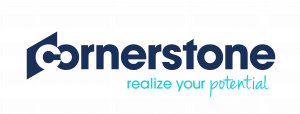This blog post is an excerpt from GovLoop’s market trends report “How Learning Management Systems Drive Better Outcomes for Health and Human Services Agencies.” Download the full report here.
Health and human services (HHS) agencies at all levels of government face some common challenges, including the need to centrally track data and outcomes, ensure that staff have the proper training, and comply with regulations and standards.
Federal agencies, in particular, have a host of chronic issues they must wade through. “With the changing landscape that’s happening in the federal government, budgets have been slashed and agencies are working with very outdated systems,” said Courtney Searles, Federal Account Manager at Cornerstone. Some of those systems are so antiquated and difficult to maintain, agencies struggle to even use them.
HHS agencies also have the added pressure to cut costs while focusing on outcomes. But to improve outcomes, they need substantive data to justify current programs and make the case for new initiatives. This is often easier said than done, considering that data is dispersed across various legacy systems, some of which are decades old and critical to the mission.
“For state and local HHS agencies, they too are grappling with legacy systems. They are also stymied by the absence of an established way to assess employee training for compliance purposes,” said Jared Bogert, Vice President of State and Local Government, Education, and Nonprofit at Cornerstone.
To address these challenges, HHS agencies are exploring enhanced IT tools that empower them to make data-driven decisions. For a growing number of federal, state and local agencies, the solution has come in the form of a learning management system (LMS).
At its core, an LMS is a software application for administrating, delivering and tracking e-learning or training programs. But an LMS isn’t just about training anymore. It’s about employee engagement, ensuring compliance and developing critical skills for the workforce.
For the HHS industry, an LMS improves real-time decision-making, increases compliance with regulations and delivers corporate training to employees. The state of Colorado is one example. Workers there use an LMS to centralize data and track and analyze return on investment (ROI). An LMS can be a powerful tool to meet current and future demands and boost employee engagement.
The reality is Microsoft Excel spreadsheets are the norm for most HHS agencies, which creates major issues for tracking information. A lack of visibility into workforce data and other metrics makes it harder to address current and future issues, including skills gaps.
“As workforce dynamics change and more seasoned professionals near retirement, agencies are experiencing a shortage of younger employees,” Bogert said. “To ensure all employees have the necessary skills to fill any workforce gaps, agencies must provide adequate training. Although some entities have a way to deliver learning to employees, they don’t have a reliable and consistent way to centrally track that information.”
Finally, curbing the growing opioid epidemic is a massive undertaking that requires collaboration and data-sharing among multiple stakeholders. Agencies must tackle the inappropriate prescribing of opioids, combat fraud and address misuse of grant funds.
At all levels, HHS organizations are in dire need of more modern solutions and processes to enable data-driven decisions, eliminate silos, meet compliance requirements and empower their workforce to serve the public.
To effectively address these challenges, agencies need a comprehensive solution that is easy to use and allows them to consolidate training, compliance and data tracking into a unified platform. To learn how a learning management system can provide the help government needs, read our latest report.





Leave a Reply
You must be logged in to post a comment.